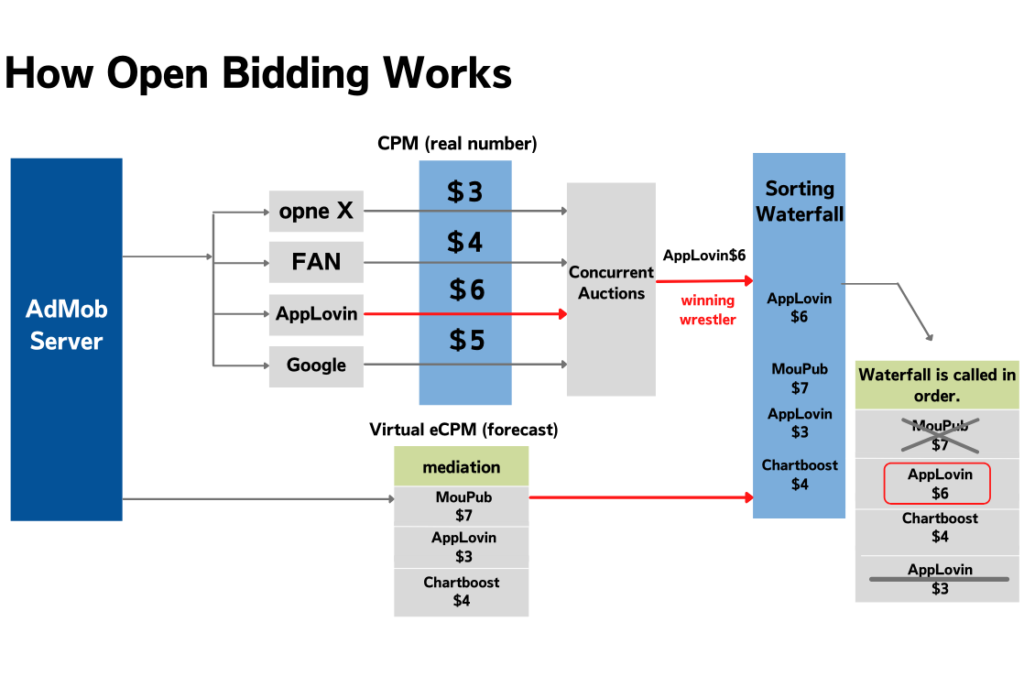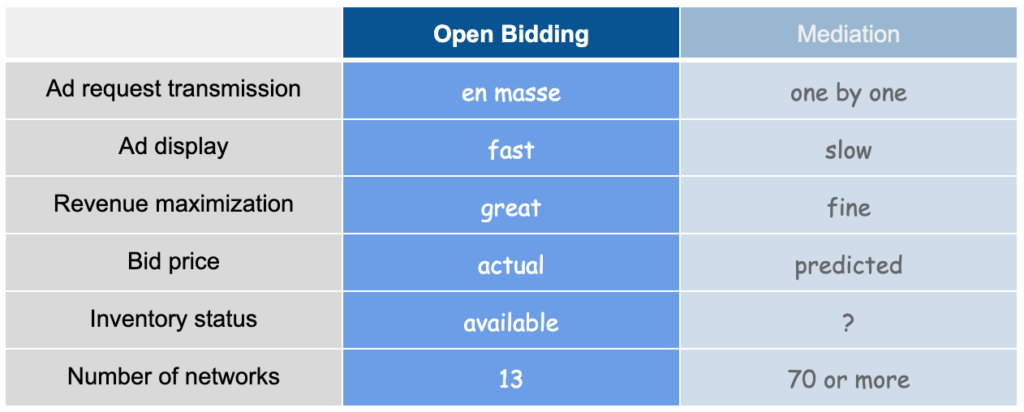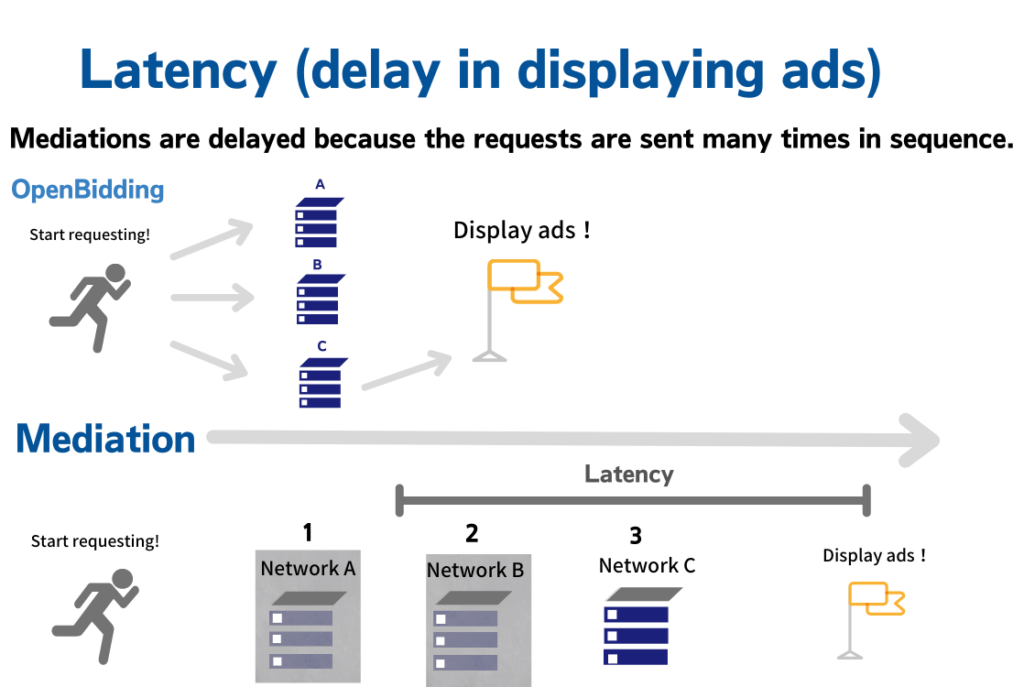Open Bidding is the leading in-app bidding solution for app monetization. It can be combined with mediation to generate higher revenue. In this first advanced section of the AdMob guide, we cover how it works and how it differs from mediation
Index:
・What is Open Bidding?
・Open Bidding and mediation, what is the difference?
・Getting started with Open Bidding
What is Open Bidding?
The first thing to remember about this solution is that Open Bidding can increase revenue through a different mechanism than mediation. Open Bidding is an in-app real-time bidding, which maximizes unit prices by allowing multiple ad networks to join ad auctions. Mediation we discussed in the two previous volumes also involves sending requests to multiple competing ad sources for a single impression, but it can miss out on the highest price. We’ll talk about the difference later in this volume, but also see Vol. 4 for more info. Open Bidding, in contrast, has a mechanism that allows the highest bidder to bid with a higher probability of success.
How Open Bidding works
1. Impressions are generated within apps.
2. AdMob’s SDK sends requests to all Open Bidding bidders simultaneously.
3. The highest bid returned from a bidder is set as the winner.
4. The winner is added to a mediation group.
5. Mediation sorts the winner along with the other ad networks in the mediation group in descending order by expected bid price. (waterfalling)
6. Requests are sent starting from the top of the waterfall list and the first ad returned is displayed.
5 to 6 is the same process with mediation we’ve already seen in Vol. 4, and 1 to 4 is the specific mechanism to Open Bidding. The key points to keep in mind are:
・Open Bidding runs before mediation.
・Requests are sent to multiple ad sources simultaneously.
・An ad source with the highest bid in Open Bidding joins mediation and competes with other ad sources for a higher position in the waterfall list.
As those familiar with web advertising may have noticed, Open Bidding is a similar solution to header bidding, which will be discussed in another volume.

Open Bidding and mediation, What is the difference?
The following table summarizes the differences between Open Bidding and mediation.

The most important features of Open Bidding are,
1.Simultaneous transmission of ad requests,
2.Auctioning every time an impression is generated,
3.And the number of supported networks is fewer than mediation.
Let’s take a close look at these.
Simultaneous transmission of requests is a key feature of Open Bidding because latency (data transmission delay) is inherent in mediation, where not only are requests sent one-by-one, but also the subsequent requests cannot be sent until a response is received to the previous one. Needless to say, the time required to display an ad in mediation gets longer with more ad networks (otherwise called ad source), during the delay the opportunity to display an ad might get lost due to the user’s actions. In contrast, Open Bidding requests only a single transmission, so the difference with mediation is distinct.

In Open Bidding, a request is sent to each ad network simultaneously every time an impression occurs, and bidders (ad networks) bid by quoting their actual bid price. In mediation, on the other hand, requests are sent one at a time, starting with the bid with the highest predicted price based on the bid price predictions. Since the order in which requests are sent is based solely on the predicted prices, a situation may arise in which the actual amount a bidder offers after winning the bid is smaller than predicted. This is why Open Bidding, in which bidders offer the actual ad space purchase price for every impression, ensures that publishers get the highest bid. The process of bidding in real-time for every impression is called RTB (Real Time Bidding).
Open bidding has spectacular advantages over mediation, but there are fewer networks that support it. Mediation is supported by more than 30 networks via adapters and more than 70 networks can be added as custom events, while there are only 13 networks that support Open Bidding. This is why using only Open Bidding is not sufficient and profitable enough. Although the number of networks that support Open Bidding is set to increase, it’s still better to use this bidding solution and mediation together and let as many networks as possible compete for ad spaces to boost revenue.
Getting started with Open Bidding
Publishers would face quite a few challenges to implement Open Bidding. This bidding feature is a beta version that is available to selected accounts that have passed Google’s own review process. Only after you have cleared some prerequisites and received approval from Google, you are ready to set up Open Bidding in AdMob. You can also work with a Google certified partner and have your application reviewed through them. When it seems that your app alone doesn’t reach the requirements, but you still want to further increase your revenue by using all available monetization methods, please feel free to contact us, an official Google partner. We’ll consult you on everything related to Open Bidding and help you implement it.

In the next volume, we’ll look at the features, benefits and usage of adaptive banners plus Q&A on ad revenue optimization.




